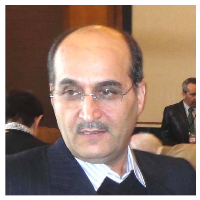Land-form Matching and Evaluation of the Tectonic and Seismic activities in the Northern Section of Qom-Zefreh Fault Zone
Introduction The faults of the northern section of Qom-Zafreh fault system with right-lateral right-angled movements, along with its often reversed components, also comprise the northern parts of the central Iran's zone. In this research, seismic potential and tectonic stresses of this fault system are investigated based on geomorphometric and morphotectonic methods. Field data and morphotectonic evidence in the area have been used to adapt the data. To this end, the measurement of some geomorphic indices and their adaptation to the location of the main faults were used. These indicators, which are most widely used in the tectonics and neotectonic evaluation studies, are: First category (level-level indicators). Second category) Indices related to the catchment basin dynamics. On the one hand, the characteristics of the mentioned indices are, on the one hand, their sensitivity to the movements of sliding and steady-state faults and, on the other hand, the reason for the predominance of deformed phenomena in relation to the erosion phenomena in the region. To calculate geomorphic indices in 18 sub-basins in the study area, the TecDEM extension program was also used. The initial results indicate the high tectonic activity near the main faults of the northern part of the Qom-Zafare zone such as Bidadeh fault, Qom fault, Kashan fault, and .... These findings are consistent with landforms and are consistent with tectonic practices existing at the region. Materials and methods In this research, the seismic potential and tectonic activity of the northern section of the Qom-Zafare fault system have been evaluated using geomorphometric and morphotectonic methods in the sub-basins of the study area. In order to investigate the tectonic activity, the study area was divided into 18 sub-basins. Then, to measure and evaluate the tectonic activities of the study area, measurements of geomorphic indices and their adaptation to the location of the main faults were used. In order to calculate the geomorphic indices of the study area, they were classified into two general categories: 1) Dynamic indicators of the surface which are: longitudinal gradient (SL), sine wave of the mountain front (Smf) and valley width to valley height ( Vf). 2) Dynamic catchment indicators of the catchment area that are as follows: drainage basin asymmetry (Af), hypsometric integral (Hi) and drainage basin shape (Bs). To improve and improve the quality of measuring the tectonic and neotectonic indices, the computational capability of the TecDEM software, which is an add-on, is used in the Matlab software environment. After extraction, the results of the geomorphic indices were separated into ArcGIS environment by separate study basins of each study area and then the tectonic activity index (Iat) was obtained. Based on the obtained values from the active land development index (IAT), the five study areas were very active, active, moderate, and low activity and very low activity. Results and discussion The study area includes the northern section of Qom-Zefreh fault zone, which includes a large part of the Qom province. This zone extends from the east and south-east to the Central Iran zone and from the north to the Alborz zone and from the west and southwest to Sanandaj Zone of Garrison. In general, there are active tectonic processes and seismic faults in the northwest-southeastern region. Measurements and investigation of the evidence of the activity of faults in quaternary sediments indicate the change in the process of these faults and cause the alteration of these faults to be generally right-angled, although the left-handed movements in some of the secondary or non-essential faults are due to Their orientation is seen in relation to the main stress (Morley et al., 2009; Orang et al., 1393; Pourkermani et al., 2012; Eliaszadeh et al., 2012). Conclusion In order to conclude and evaluate the seismic potential and tectonic activity in this part of the Qom-Zefref fault zone, these indicators are divided into two general categories: dynamic and dynamic indicators of catchment basins, then by the relative activity index Iat They were classified into three categories (Table 1). Finally, by integrating the Iat index layer and other information layers, including the deformation of the main faults and the intensity of seismic centers in the ArcMap10.3 software environment, based on seismicity and tectonic activity, five classes: very low, low, moderate, high And were classified very much and the seismic potential zonation map and tectonic activities of the study area were extracted. In this research, for the first time, geomorphic indices for zoning seismicity and tectonic activities in terms of the relative tectonic activity index of Iat, in contrast to other studies using only geological parameters (lithology), are used.
- حق عضویت دریافتی صرف حمایت از نشریات عضو و نگهداری، تکمیل و توسعه مگیران میشود.
- پرداخت حق اشتراک و دانلود مقالات اجازه بازنشر آن در سایر رسانههای چاپی و دیجیتال را به کاربر نمیدهد.


